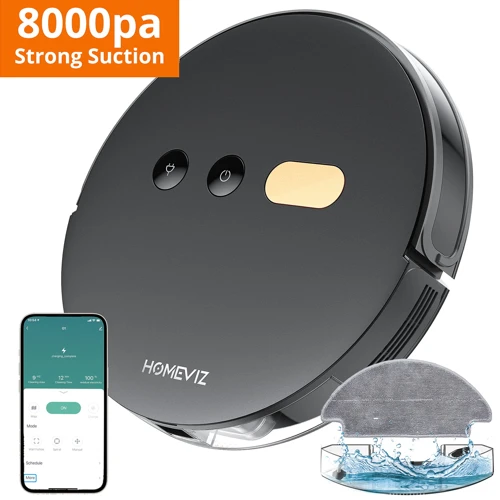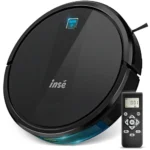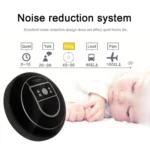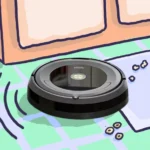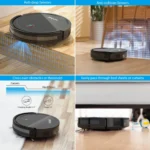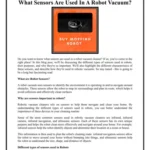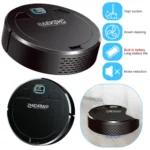When it comes to keeping our homes clean, we’re always on the lookout for ways to make the process more efficient and hassle-free. With the rapid advancement of technology, cleaning has become smarter, more precise, and less time-consuming. One such innovation that has recently gained popularity is the use of artificial intelligence (AI) in vacuum cleaners. Not only do these devices come equipped with anti-collision and drop sensors, but also rely on a complex system of sensing, perception, and decision-making to navigate and clean our homes. In this article, we’ll delve into the role of AI in smart vacuum cleaners and explore how these devices are revolutionizing the cleaning industry.
Benefits of AI in Smart Vacuum Cleaners
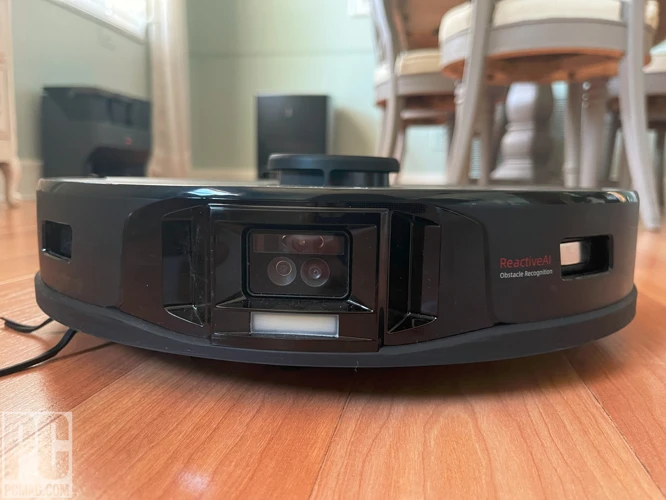
As technology advances, so does the functionality of everyday household appliances. One such example is the smart vacuum cleaner, equipped with Artificial Intelligence capabilities that make cleaning tasks easier and more efficient. With the help of advanced sensors and software, these devices offer several benefits to the user. In this section, we will explore the advantages of using AI in smart vacuum cleaners, including precision navigation, anti-collision sensors, drop sensors, and efficient cleaning. For more information on how these features work, check out our articles on anti-collision sensors and drop sensors. Stay tuned and learn how to avoid the common mistakes with your smart vacuum cleaner in our article on smart vacuum mistakes to avoid, and how to troubleshoot your device’s sensors in our guide on smart vacuum sensor troubleshooting.
1. Precision Navigation
Smart vacuum cleaners with AI technology have revolutionized the way we clean our homes. One of the key benefits of AI in these devices is precision navigation. In this section, we will explore how AI enables smart vacuum cleaners to navigate with accuracy and efficiency.
Table: Features of Precision Navigation in Smart Vacuum Cleaners
| Features | Importance |
|---|---|
| Sensor-based Mapping | Enables the device to map out the room and create a systematic cleaning plan. |
| Real-time Tracking | Tracks the device’s location and path in real-time, making it possible to adjust and optimize the cleaning path. |
| Multi-level Mapping | Allows the device to map out multiple floors and recognize different areas, making it easier to clean efficiently. |
| Virtual Walls and No-go Zones | Enables users to set boundaries for their device to avoid certain areas or objects. |
Precision navigation is made possible through advanced sensors that can create a map of the room and track the device’s movement in real-time. As the device moves through the room, it creates a systematic cleaning plan based on the layout of the space. The device can then navigate through the room with accuracy and efficiency, ensuring that every inch of the floor is covered.
One of the most important features of precision navigation is multi-level mapping. Smart vacuum cleaners with AI technology can recognize different floors and areas, making it easier for the device to clean efficiently. This feature enables the device to remember the layout of the room even after it has been turned off, so users don’t have to reset the device every time they use it.
Another important feature of precision navigation is the ability to set virtual walls and no-go zones. This feature allows users to set boundaries for the device to avoid certain areas or objects. For example, if there is a specific area in the room that the device is not supposed to clean, users can set a no-go zone to prevent the device from going there.
Precision navigation is one of the key benefits of AI in smart vacuum cleaners. Through advanced sensors and mapping technology, these devices are able to navigate with accuracy and efficiency, creating a systematic cleaning plan and covering every inch of the floor. The ability to recognize different floors and areas, as well as set virtual walls and no-go zones, makes smart vacuum cleaners with AI technology even more efficient and useful for everyday cleaning tasks.
2. Anti-Collision Sensors
Anti-collision sensors are one of the most impressive features of smart vacuum cleaners that have an AI-based platform. AI-powered vacuum cleaners come with a range of detection sensors that help them navigate around obstacles and prevent collisions. They use various sensors, including infrared, ultrasonic, and optical sensors, to create a map of the room they need to clean while avoiding obstacles.
These sensors help the vacuum cleaner to detect obstacles such as walls, furniture, and other objects that tend to get in the way during the cleaning process. They can then use this information to make adjustments to their cleaning path to avoid any potential collisions. As a result, smart vacuum cleaners equipped with anti-collision sensors can prevent accidental bumps, scratches and other damages caused by traditional vacuum cleaners.
In addition to preventing collisions, anti-collision sensors also help with providing improved cleaning efficiency. The sensors help in identifying spots with a high concentration of dust and cleaning them more thoroughly than other areas. This ability to focus on areas that require more attention not only enhances the cleaning process but also helps to conserve energy and prolong battery life.
Anti-collision sensors play a crucial role in ensuring efficient and effective cleaning. They allow the smart vacuum cleaners to operate seamlessly without causing damage to the furniture, walls, or themselves. AI-powered vacuum cleaners also tend to use sensors for other important functionalities such as drop sensors, which help them to avoid stairs falls and other potential hazards.
Here is a table that summarizes the benefits of anti-collision sensors in smart vacuum cleaners:
| Benefits of Anti-Collision Sensors in Smart Vacuum Cleaners: |
|---|
| Preventing collisions with furniture, walls and other objects |
| Improved cleaning efficiency by identifying areas that require more attention |
| Conserving energy and prolonging battery life through avoidance of redundant cleaning routes |
Smart vacuum cleaners with anti-collision sensors are game-changers in the cleaning industry. They offer unparalleled cleaning precision, efficiency, and convenience, reducing the time and effort required for cleaning. As technology continues to advance, the integration of AI will undoubtedly introduce new and exciting features to the already impressive capabilities of these devices.
3. Drop Sensors
Smart vacuum cleaners equipped with artificial intelligence have revolutionized the way we clean our homes. In addition to precision navigation and anti-collision sensors, these devices have also been built with drop sensors, which play a crucial role in protecting the device and the surfaces around it.
The drop sensor is a specialized sensor in a vacuum cleaner that helps detect falls or drops when the vacuum cleaner is in use. Designed to detect a sudden drop in height, the drop sensor ensures that the vacuum cleaner stays safe and does not fall off stairs or other elevated surfaces.
How do Drop Sensors Work?
Drop sensors in smart vacuum cleaners are usually located on the bottom of the device. They use infrared technology to measure distances and send signals to the vacuum cleaner’s main processor, which processes the information and responds accordingly.
Whenever the vacuum cleaner approaches a ledge or a drop, the drop sensor works by sending a signal to alert the main processor of the danger. The processor then adjusts the speed and direction of the vacuum cleaner to avoid falling or tumbling over the edge.
Benefits of Drop Sensors in Smart Vacuum Cleaners
Drop sensors have become a vital component of smart vacuum cleaners, thanks to their many benefits, which include:
| Benefits of Drop Sensors in Smart Vacuum Cleaners |
|---|
| Prevent falls or damage to the vacuum cleaner: Drop sensors protect the device from falls or damage due to drops or falls. |
| Prevent damage to the surfaces: Smart vacuum cleaners with drop sensors prevent damage to floors, carpets, and rugs. |
| Efficient cleaning: With drop sensors, the vacuum cleaner can clean more efficiently and quickly without the risk of running into obstacles or dropping off edges. |
| Improved Safety: Smart vacuum cleaners with drop sensors are safer to use, especially in homes with children or pets who may accidentally trip over the device. |
The Future of Vacuum Cleaners with Drop Sensors
As technology continues to advance, the future of smart vacuum cleaners with drop sensors remains bright. In the coming years, we can expect to see more sophisticated and advanced versions of these devices.
Newer models will have even more powerful drop sensors that can detect smaller heights and distances, leading to even better safety for the device and surfaces in the home. Additionally, with the continued evolution of machine learning algorithms, smart vacuum cleaners with drop sensors will become better at learning and adapting to different environments in the home.
Smart vacuum cleaners equipped with drop sensors are a game changer in household cleaning. They not only clean more efficiently but also protect the device and surfaces from damage caused by falls or drops. With the continued evolution of AI technology, smart vacuum cleaners will become even more intelligent, making household cleaning a breeze.
4. Efficient Cleaning
The advancement of Artificial Intelligence (AI) has revolutionized the way we clean our homes by introducing Smart Vacuum Cleaners. The AI technology in Smart Vacuum Cleaners makes them more efficient and effective in cleaning compared to the traditional vacuum cleaners. The smart vacuum cleaners not only provide efficient cleaning but also improve the overall cleanliness of your home. Let’s explore how AI helps in achieving efficient cleaning:
| Efficient Cleaning Features | Description |
|---|---|
| Multi-floor cleaning | The AI-powered smart vacuum cleaners can clean multiple floors effortlessly. They use pre-set maps to navigate and clean different floors without needing any human intervention. |
| Intelligent Dustbins | The AI-powered dustbin in smart vacuum cleaners is highly efficient in trapping dirt and dust particles. The dustbin automatically opens to dispose of the collected dirt for hassle-free cleaning. |
| Custom cleaning preferences | The smart vacuum cleaners come with custom cleaning settings that users can adjust to fit their cleaning preferences. By using mobile devices or virtual assistants, users can set cleaning modes, schedules, cleaning intensity, etc. |
| No-Go Zones | To ensure efficient cleaning, the AI-powered smart vacuum cleaners can be programmed to avoid certain areas, such as under furniture, high-traffic areas, and obstacles that might impede cleaning progress. |
| Smart room cleaning | The AI-powered smart vacuum cleaners use sensors to detect dirt and debris in different rooms. It then adjusts the cleaning mode and intensity according to the room need. It ensures that all rooms are cleaned efficiently. |
The AI-powered smart vacuum cleaners are highly efficient in providing effective and more customized cleaning than traditional vacuum cleaners by introducing features like multi-floor cleaning, intelligent dustbins, custom cleaning preferences, No-Go zones, and smart room cleaning.
How AI Works in Smart Vacuum Cleaners
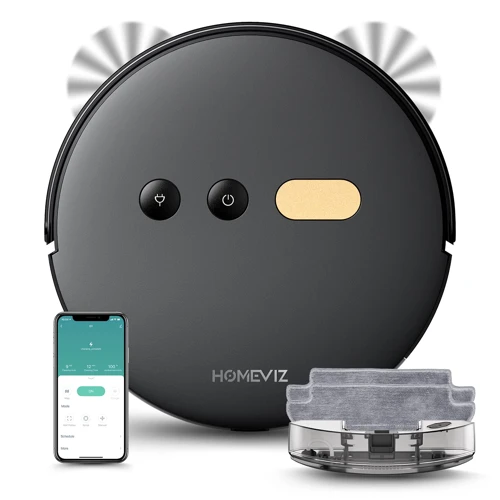
Have you ever wondered how smart vacuum cleaners with anti-collision and drop sensors work? The answer is simple: Artificial Intelligence (AI). The integration of AI in these appliances has revolutionized the way they function, making them more efficient and reliable. But how exactly does AI work in smart vacuum cleaners? Let’s dive into the details and explore the different components and processes involved. From sensing and perception to decision making and action, the role of AI in smart vacuum cleaners is complex yet fascinating. So, let’s get started and unveil the mystery behind this technological wonder.
1. Sensing and Perception
Sensing and Perception play a critical role in the functioning of AI-powered smart vacuum cleaners. In this process, the robot vacuum cleaner collects data from its environment, analyses it, and makes decisions accordingly. This process involves various sensors including cameras, ultrasonic sensors, and infrared sensors.
The sensing mechanism: Smart vacuum cleaners use sensors that can detect obstacles and objects in their surroundings. This helps them navigate and clean efficiently. The sensors can pick up the location and size of objects that are not visible to the human eye.
The perception mechanism: Perception involves processing the data collected from sensors to create a virtual map of the space that the vacuum cleaner will be cleaning. The vacuum cleaner uses this map to plan its path and create a cleaning schedule. The perception mechanism also comes into play when the vacuum cleaner is in operation. It allows it to detect changes in the environment in real-time and adjust its path accordingly.
Here is a table showcasing the various sensors utilized in the sensing mechanism:
| Sensor Type | Description |
|---|---|
| Camera | Captures images and converts them into data that can be analyzed. Allows for accurate mapping and location of objects. |
| Ultrasonic sensor | Utilizes sound waves to detect objects and their proximity. Useful in detecting obstacles and drop-offs. |
| Infrared sensor | Detects objects in front of it and aids in obstacle detection. |
In addition to these sensors, some smart vacuum cleaners also include sensors that can detect dirt and dust on surfaces. These sensors allow for more efficient cleaning and ensure that no spot is left untouched. The data collected by the sensors is then fed into the machine learning algorithm.
2. Machine Learning
Machine learning is a crucial component of AI technology in smart vacuum cleaners that allows them to learn and improve over time. Here are some key points about machine learning:
- Adaptive algorithms: Smart vacuum cleaners use adaptive algorithms that learn from previous cleaning experiences and adapt to different environments, allowing for more efficient and effective cleaning.
- Data collection: These devices are equipped with sensors that collect data about the layout of the room, obstacles present, and more. This data is then used to train the machine learning algorithms to recognize patterns and make predictions about what actions to take.
- Real-time analysis: Smart vacuum cleaners use real-time analysis to interpret data and make decisions about which cleaning routes to take to avoid obstacles or clean certain areas more thoroughly. Over time, the device can adapt and learn from its own experiences to refine its cleaning patterns.
- Automatic updates: With machine learning algorithms, smart vacuum cleaners are able to receive automatic updates to improve their functionality over time. This means that users don’t need to constantly update or replace their devices to have access to the latest features and capabilities.
Machine learning plays a critical role in the development and operation of smart vacuum cleaners. With this technology, these devices can learn and adapt to perform their cleaning tasks more efficiently and effectively, improving the overall user experience.
3. Decision Making
The Role of Decision Making in AI-driven Smart Vacuum Cleaners
Decision making is an integral part of any AI-driven system, including smart vacuum cleaners. In order to make the best cleaning decisions, the vacuum cleaner must be equipped with sophisticated sensors that can accurately detect and identify the surrounding environment. These sensors provide the necessary input for the vacuum cleaner’s AI system to analyze and decide on the appropriate cleaning action.
The following table summarizes the common types of sensors used in smart vacuum cleaners and their corresponding role in decision making:
| Sensor Type | Role in Decision Making |
|---|---|
| Optical Sensors | Enable the vacuum cleaner to detect and map the surrounding environment, providing essential data for the AI system to make informed decisions about the cleaning path and necessary action. |
| Infrared Sensors | Allow the vacuum cleaner to identify obstacles and prevent collisions, minimizing the risk of damage to the vacuum cleaner or surrounding objects. |
| Ultrasonic Sensors | Provide information about the distance and location of objects around the vacuum cleaner, allowing the AI system to create an accurate map of the environment and make decisions about the best course of action. |
| Cliff Sensors | Enable the vacuum cleaner to detect drops or cliffs and adjust its cleaning path to avoid falling off or damaging the vacuum cleaner. |
| Touch Sensors | Help the vacuum cleaner to identify and avoid obstacles, and alert the AI system to make decisions about the optimal cleaning approach. |
In addition to the sensor data, the vacuum cleaner’s AI system also takes into account other factors such as battery life, cleaning time, and cleaning mode. Based on all these inputs, the AI system makes the best decisions about how to clean the room efficiently and effectively.
Over time, the vacuum cleaner’s AI system learns from its experiences and adapts its decision-making process to better suit the user’s preferences and cleaning needs. As the vacuum cleaner continues to clean, it becomes more efficient at decision making, making cleaning tasks more effective and faster.
The decision-making capabilities of AI-driven smart vacuum cleaners play a crucial role in making these devices more efficient, user-friendly, and effective. The combination of sensors, machine learning, and decision making makes them some of the most intelligent and useful devices in the modern home, saving time and effort for homeowners.
4. Action
After making a decision using advanced algorithms, the smart vacuum cleaner takes action to clean the room effectively. This involves moving around the room in a planned manner, intelligently cleaning surfaces, and avoiding obstacles.
The actions of smart vacuum cleaners are controlled by a combination of motorized wheels, brushes, suction systems, and fan technology. These components work together to remove dirt, dust, and debris from every corner of the room.
Here are some of the key actions performed by smart vacuum cleaners with AI:
- Vacuuming: The vacuum cleaner uses its suction power to pick up small particles like dust and dirt from the floor, carpet, or any other surface.
- Brushing: Brushes that spin or rotate work in tandem with the suction system to collect debris and pet hair from the floor.
- Mopping: Some smart vacuum cleaners also have a built-in mop to clean hard floors, using microfiber cloths and water reservoirs.
- Spot Cleaning: Smart vacuum cleaners with this function can detect and focus on heavily soiled areas to clean them before moving on to other parts of the room.
- Returning to Dock: After completing the cleaning task, the smart vacuum cleaner will return to its dock to recharge itself, ready for the next cleaning cycle.
The action stage involves the physical work of the smart vacuum cleaner, allowing it to collect dirt and dust from various surfaces in your home. The combination of suction and brush technology works effectively to increase the cleaning power of the robot, and the advanced algorithms that control the action ensure that it avoids obstacles and cleans the entire room efficiently.
Future of Smart Vacuum Cleaners with AI
As technology continues to advance at an unprecedented rate, smart vacuum cleaners with AI are bound to become more advanced and efficient. The current vacuum cleaners with AI have significantly improved our cleaning experience, but there is still room for even more remarkable changes in the future. With various innovations and improvements that can be integrated with AI, the future of smart vacuum cleaners is an exciting one. In this section, we will discuss some of the ways that smart vacuum cleaners with AI are expected to evolve and revolutionize the industry. Let’s dive in and explore the possibilities of this technology.
1. Integration with Smart Homes
Smart home technology has been gaining popularity rapidly in recent years. It enables homeowners to control their household devices remotely and even automate certain actions. Smart vacuum cleaners have not been left behind in this trend and have increasingly been integrating with smart homes. The following are some of the ways in which smart vacuum cleaners with AI can integrate with your smart home:
- Mobile App Control: With the integration of AI, smart vacuums can be controlled remotely via mobile apps. This means that even when you are not at home, you can easily switch on your vacuum to clean your home. You can also control the cleaning schedule, suction power, and other settings using the app.
- Voice Control: Thanks to the integration of AI assistants like Alexa and Google Assistant, you can now control your smart vacuum using voice commands. For instance, you can simply say “Hey Google, tell the vacuum to start cleaning the living room” and your smart vacuum will get to work.
- Integration with Other Smart Devices: AI-powered smart vacuums can integrate with other smart home devices like smart thermostats and smart lighting. A good example is the Roomba i7+, which can communicate with iRobot Braava jet m6 to clean hard floors as soon as the vacuum completes its cleaning task.
By integrating with smart homes, smart vacuum cleaners with AI are making it easier for people to clean their homes while minimizing their effort. The ability to control them remotely, using their smartphones or voice assistants makes cleaning more convenient. Additionally, integration with other smart home devices makes it possible to automate certain household tasks, making it even easier to maintain a clean home.
2. Advanced Mapping and Navigation
In the future, it is expected that smart vacuum cleaners equipped with advanced mapping and navigation technology will become more common. The integration of AI in these devices allows for more efficient and accurate cleaning, as well as improved user control and convenience. Through machine learning, smart vacuum cleaners can map out the layout of a home, remember obstacles and furniture, and plan routes for cleaning.
Advanced Mapping: With advanced mapping technology, smart vacuum cleaners can create an accurate map of a home and all its rooms. These maps can be stored and updated each time the vacuum is used. The robot can identify the location of furniture and obstacles and plan its cleaning path accordingly. This allows for precise and efficient cleaning of each room.
Navigation: With AI-powered navigation, smart vacuum cleaners can make decisions about the best path to take through a room, as well as how to transition from one room to another. This means that the vacuum can clean every area of a home without missing any spots. Additionally, if the vacuum runs low on battery or encounters an obstacle, it can navigate back to its charging dock or resume cleaning once the obstacle is removed.
To illustrate the benefits of advanced mapping and navigation in smart vacuum cleaners, consider the following table:
| Traditional Vacuum Cleaners | Smart Vacuum Cleaners with Advanced Mapping and Navigation |
|---|---|
| Random and inefficient cleaning patterns | Precise and efficient cleaning based on an accurate map of the home |
| No ability to remember obstacles or furniture | Can remember obstacles and furniture, and plan cleaning routes accordingly |
| Cannot navigate back to charging dock when battery runs low | Can automatically navigate back to charging dock and resume cleaning when battery is charged |
The integration of advanced mapping and navigation technology into smart vacuum cleaners has the potential to revolutionize the way we clean our homes. With increased efficiency, precision, and convenience, AI-powered vacuums are sure to become more and more popular in the coming years.
3. Multi-Room Cleaning
One of the most significant benefits of AI in smart vacuum cleaners is the ability to clean multiple rooms without any human intervention. While earlier models of robotic vacuums could not identify individual rooms, today’s smart vacuums are equipped with advanced software that not only recognizes different spaces but also develops a cleaning plan tailored to each room.
The multi-room cleaning feature is a popular add-on among homeowners. With just a tap of a button, the smart vacuum effortlessly navigates across various rooms, cleaning every nook and cranny. Some models allow for customization where homeowners can specify which rooms they want their vacuum to clean and which areas to avoid.
This feature is especially beneficial for larger homes with multiple rooms and floors, as it saves time and effort that would otherwise be required to manually move the vacuum from one space to another. Additionally, multi-room cleaning ensures that every corner of the house is free from dust, debris, and allergens – this is particularly important for households with pets or allergy sufferers.
Thanks to the integration of AI technology, smart vacuums can now create maps of the entire home, enabling them to navigate from room to room with ease while avoiding obstacles in their path. They can return to their charging docks on their own and pick up where they left off once the battery is charged.
As AI technology continues to evolve, homeowners can expect even more features to be added to their smart vacuums, making their lives even more effortless. With advances in machine learning, smart vacuums will be able to identify areas that require more frequent cleaning, develop more efficient cleaning routes, and even detect when a home is empty to start cleaning automatically.
4. Improved Battery Life
One of the most impressive benefits of AI in smart vacuum cleaners is the improved battery life. With traditional vacuum cleaners, you may find yourself constantly stopping to recharge or replace the battery. However, smart vacuum cleaners with AI technology have managed to solve this problem.
A few ways smart vacuum cleaners improve battery life:
- Efficient Cleaning: Smart vacuum cleaners use AI algorithms to navigate around your home and clean more efficiently. This means that they can cover more ground and use less battery power in the process. They are also designed to avoid cleaning the same area twice, which saves even more battery life.
- Advanced Sensors: Anti-collision and drop sensors, which we discussed earlier, play a key role in improving battery life. By avoiding collisions with walls and objects and detecting drops in advance, smart vacuum cleaners can move more confidently and use less battery power.
- Automatic Recharge and Resume: Many smart vacuum cleaners are equipped with an automatic recharge and resume feature. This means that the robot vacuum will detect when its battery is running low and automatically return to its charging dock to recharge. Once the battery is fully charged, the vacuum will continue cleaning from where it left off.
- Energy-Saving Modes: Some smart vacuum cleaners come with energy-saving modes that reduce battery consumption. For example, they may lower the suction power or clean at a slower speed to conserve energy. These modes are particularly helpful when you need to clean a large area or you want to maximize the battery life of your vacuum.
With its advanced AI technology, smart vacuum cleaners have revolutionized home cleaning. With features like improved battery life, efficient cleaning, and automatic recharge and resume, these robots are set to become an essential part of modern homes.
Conclusion
In conclusion, the integration of Artificial Intelligence (AI) in smart vacuum cleaners has revolutionized the process of home cleaning. With the help of advanced sensors and computer algorithms, these devices are now capable of navigating through households with precision and efficiency, leaving behind a clean and healthy environment.
Overall, the benefits of AI in smart vacuum cleaners are twofold – it saves time and offers an unparalleled level of convenience. Homeowners no longer need to spend hours manually cleaning their floors and carpets, as smart vacuum cleaners take care of the entire process autonomously. This is especially helpful for individuals with busy schedules who can’t afford to spend time mopping and vacuuming their homes consistently.
Additionally, smart vacuum cleaners equipped with anti-collision and drop sensors ensure that they can safely clean a home without damaging any furniture or falling down stairs. This is a significant improvement over traditional vacuum cleaners that require constant supervision and risk breaking valuable household items.
Another key advantage of AI in smart vacuum cleaners is that it allows for more efficient cleaning. The sensors on these devices can detect where the dirt and debris are concentrated, altering their path and cleaning method as needed. This ensures a more thorough cleaning process and helps prevent the re-emergence of dirt or allergens.
Looking towards the future, the potential for smart vacuum cleaners with AI is limitless. As the technology continues to evolve, we can expect to see more advanced mapping and navigation systems that can create digital blueprints of home interiors to improve cleaning efficiency. Additionally, we can expect to see multi-room cleaning and longer battery life, which will make these devices even more convenient for everyday use.
All in all, smart vacuum cleaners with AI are changing how we clean our homes. They not only save us time and hassle but also provide a level of efficiency and convenience that was not possible before. As such, they are sure to remain an indispensable tool for many households in the years to come.
Frequently Asked Questions
1. How does AI improve the cleaning performance of smart vacuum cleaners?
AI enables smart vacuum cleaners to navigate and map the cleaning area, avoid obstacles, and adjust cleaning accordingly, resulting in more efficient and effective cleaning performance.
2. Can smart vacuum cleaners with AI be used for multi-room cleaning?
Yes, smart vacuum cleaners with advanced AI capabilities can create and save maps of multiple rooms and navigate between them for seamless cleaning.
3. What are anti-collision sensors in smart vacuum cleaners?
Anti-collision sensors are sensors that detect obstacles and prevent the vacuum cleaner from colliding with furniture, walls, or other objects while cleaning.
4. How do drop sensors ensure the safety of smart vacuum cleaners?
Drop sensors detect the edges and drops, such as stairs or ledges, and prevent the vacuum cleaner from falling and causing damage to itself or the environment.
5. How does machine learning contribute to the performance of smart vacuum cleaners?
Machine learning enables smart vacuum cleaners to learn and adapt to their environment, such as identifying obstacles and patterns, making cleaning more efficient and effective over time.
6. Can smart vacuum cleaners with AI be controlled remotely?
Yes, most smart vacuum cleaners with AI capabilities can be controlled and monitored remotely through mobile apps or voice assistants.
7. What is the future of smart vacuum cleaners with AI technology?
The future of smart vacuum cleaners with AI technology includes integration with smart homes, advanced mapping and navigation, multi-room cleaning, and improved battery life.
8. Are smart vacuum cleaners with AI technology more expensive than traditional vacuum cleaners?
Yes, smart vacuum cleaners with AI technology are generally more expensive than traditional vacuum cleaners, but their advanced features and efficiency can offset the cost over time.
9. How does battery life affect the performance of smart vacuum cleaners with AI technology?
Battery life affects the runtime and cleaning performance of smart vacuum cleaners with AI. Improved battery life can enable longer cleaning sessions and better efficiency.
10. What are the benefits of integrating smart vacuum cleaners with smart homes?
Integrating smart vacuum cleaners with smart homes enables convenient control and monitoring through voice assistants, mobile apps, or home automation systems, and seamless integration with other smart devices.
